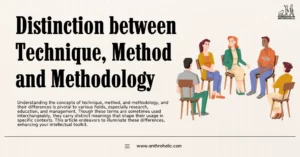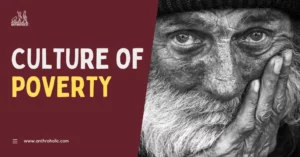AI Answer Evaluation Platform Live Now. Try Free Answer Evaluation Now
Life History
The life history approach in social research is a powerful tool that allows scholars to collect qualitative data from individuals about their life experiences, attitudes, feelings, and personal perspectives.

Understanding Life History as a Data Collection Tool
The life history approach revolves around the collection of individuals’ narratives that detail their life experiences and provide insights into their behaviors, actions, emotions, values, and attitudes. These histories typically encompass entire lives, from birth to the present day, but may also focus on specific periods or events [1].
Some of the primary characteristics of life histories include:
- Personalized data: The data collected is subjective and individual-specific, often reflecting the nuances of personal experiences.
- Contextual information: Life histories take into account the environmental, societal, and cultural contexts in which individuals live.
- Chronological detail: Life histories provide chronological detail, helping to identify how events and experiences unfold over time.
Methods for Collecting Life History Data
Collecting life history data requires different methods, primarily relying on interviews, autobiographical notes, letters, diaries, and even photographs. Researchers typically employ semi-structured or open-ended interviews to encourage participants to share their experiences freely [2].
Semi-Structured Interviews
Semi-structured interviews provide a framework for discussion but are flexible enough to explore new themes and ideas as they emerge. Interviewers may prepare a list of questions or topics to guide the conversation, but they also allow for deviation to delve deeper into particular areas of interest.
Open-Ended Interviews
In open-ended interviews, the interviewee is given more control over the direction of the conversation. The interviewer might start with a broad question, such as “Can you tell me about your life?” and then follow up with more specific queries based on the information provided.
Autobiographical Notes, Letters, and Diaries
Written sources such as autobiographical notes, letters, and diaries can also provide valuable insights into an individual’s life history. These sources are particularly useful when they have been produced over a long period, as they can offer a chronological account of a person’s life and experiences.
Advantages and Challenges of Life History Method
Advantages
- Life history data can provide rich, in-depth information about individuals’ lives, allowing for a comprehensive understanding of their experiences and perspectives.
- The method can highlight the intersectionality of different social categories such as age, gender, and class.
- Life history data can illuminate how societal changes affect individual lives over time.
Challenges
- The depth and breadth of life history data can make analysis challenging.
- Participants’ memories may be selective or inaccurate.
- Confidentiality and privacy issues can arise, as participants often share sensitive information.
Table 1: Comparison of Life History Data Collection Methods
| Method | Pros | Cons |
|---|---|---|
| Semi-Structured Interviews | Flexibility, Rich data | Time-consuming, Require skilled interviewer |
| Open-Ended Interviews | In-depth information, Participant-led | Can be unfocused, Memory biases |
| Autobiographical Notes, Letters, Diaries | Detailed chronological data, Authentic voice | Availability, Authenticity concerns |
Life History Research in Practice
To provide a holistic view, life history research often combines data collection methods. For example, a researcher may conduct a series of semi-structured interviews supplemented by a review of autobiographical notes or diaries. This approach, known as method triangulation, enhances the reliability of the research.
Researchers should consider the suitability of different methods based on their research question and context. For instance, open-ended interviews might be preferable when exploring a less understood area, whereas semi-structured interviews could be more beneficial when researching a well-defined topic.
Ethical Considerations
Like all research methods, life history research has ethical implications that researchers must consider:
- Confidentiality and Anonymity: Life histories can reveal sensitive information about individuals and those close to them. Researchers must guarantee participants’ confidentiality and consider anonymizing data to protect identities.
- Informed Consent: Participants should understand the research purpose, what their participation entails, and their right to withdraw at any stage without repercussions.
- Respect and Empathy: Interviewers should demonstrate empathy and respect for participants’ experiences and perspectives, creating a safe space for sharing.
Data Analysis
Analyzing life history data is a complex process that involves interpreting and making sense of vast amounts of qualitative data. Several strategies can be used:
- Thematic Analysis: This involves identifying and examining themes or patterns that emerge in the life history data.
- Narrative Analysis: This focuses on how the individual’s story is told, examining elements such as plot, character, and language use.
- Temporal Analysis: This involves examining the data in chronological order to understand how an individual’s experiences and perspectives have evolved over time.
Table 2: Overview of Life History Data Analysis Methods
| Method | Description |
|---|---|
| Thematic Analysis | Identification and examination of emerging themes or patterns |
| Narrative Analysis | Examination of how the story is told (plot, character, language) |
| Temporal Analysis | Chronological analysis to track evolution of experiences and perspectives |
Conclusion
Life history research provides an invaluable tool for data collection, offering a comprehensive view of individual experiences and perspectives. By navigating its challenges and ethical considerations, researchers can uncover deep insights into the interplay between personal lives and broader societal structures.
References
[1] Creswell, J. W. (2013). Qualitative inquiry and research design: Choosing among five approaches. Sage publications.
[2] Kvale, S., & Brinkmann, S. (2009). Interviews: Learning the craft of qualitative research interviewing. Sage.
[3] Flick, U. (2018). An introduction to qualitative research. Sage.
[4] Elliot, J. (2005). Using narrative in social research: Qualitative and quantitative approaches. Sage.
[5] Plummer, K. (2001). Documents of life 2: An invitation to a critical humanism. Sage.




